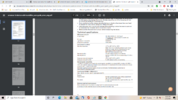As a user of CPAP for over 20 years, I don't see the problem here. And my apnea is very bad. But if the power goes out during the night you wake and take the mask off, no problem. Even if I have to go somewhere away from home for just a few days I don't take my CPAP. I and you lived for many many years without one, so I don't understand the panic of one night without it.


